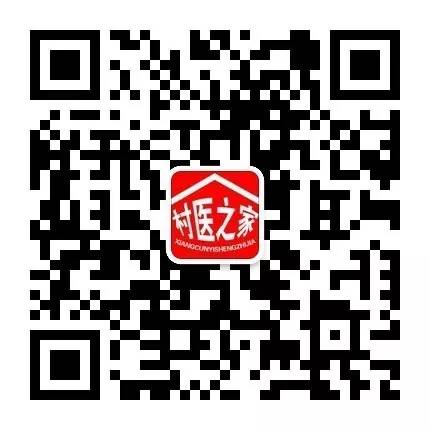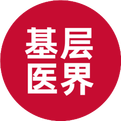
In clinical practice, there are often cases of unexplained fever that persist for years, or recurrent fevers that do not resolve year after year. In Traditional Chinese Medicine (TCM), these are referred to as internal heat fever (内伤发热) or miscellaneous fever diseases (杂病发热性疾病), which can be quite alarming for practitioners, especially if misdiagnosis leads to treatment delays.
Over the years, I have accumulated some experience in treating such diseases, which I now compile for the reference and trial of my colleagues.
01
Ying Wei Disharmony Fever (营卫失调发热)
Main Symptoms: Frequent fevers, generally around 38°C, aversion to wind, nasal congestion, body aches, and sweating. However, sweating does not alleviate the fever or body pain, and the tongue coating is thin and white.
This type of fever resembles a cold, leading some doctors to treat it as such, with patients often reporting, “I catch colds all year round…” This recurrent fever can indeed be triggered by wind-cold, resembling a cold, but it is not a cold. TCM refers to it as Ying Wei Disharmony Fever, which occurs when the body’s Qi and blood are relatively weak and cannot effectively resist external pathogens.
Prescription: Huang Qi (Astragalus) 15g, Gui Zhi (Cinnamon Twig) 10g, Bai Shao (White Peony) 12g, Gan Cao (Licorice) 6g, Sheng Jiang (Fresh Ginger) 12g, Da Zao (Jujube) 12g, decoct in water, 1 dose per day, for 3 consecutive days.
Modification: For those who frequently experience throat pain or dryness, add She Gan (Belamcanda) and Shi Hu (Dendrobium); for female patients, add Dang Gui (Angelica) 10g and Yi Mu Cao (Motherwort) 12g.
It is best to follow the medicine with a small bowl of hot congee (either rice or millet porridge) and cover with a blanket to induce slight sweating. The congee should not be viewed merely as a food to relieve hunger; when combined with the medicine, it becomes an excellent therapeutic food. After the fever subsides, take the medicine again 1-2 doses every few days for 1-2 months to fundamentally harmonize the body’s Qi, blood, Yin, and Yang, thus eliminating the root of the fever.
02
Heat Disease or Yin Deficiency Fever (热病或阴虚发热)
Main Symptoms: Fever in the afternoon or at night, with significant heat, body temperature may be low or high, but low-grade fever is more common and persists for a long time. Additionally, there may be heat in the palms and soles, dry mouth and throat, irritability, vivid dreams, or night sweats (sweating during sleep that stops upon waking), and constipation; the tongue is red with little coating.
This type of heat disease with dry mouth is referred to in TCM as Yin Deficiency Heat Fever (阴虚火旺发热), which occurs when the body’s fluids are insufficient to nourish the organs, leading to excessive organ function excitement. The more the organ functions are excited, the more body fluids are consumed, creating a vicious cycle, resulting in prolonged fever. TCM treatment for this heat disease should focus on tonifying water to control fire (壮水制火).
Prescription: Di Gu Pi (Lycium Bark) 20g, Qing Hao (Sweet Wormwood) 15g, Dan Shen (Salvia) 12g, Sheng Di (Rehmannia) 12g, Xuan Shen (Scrophularia) 15g, Sha Shen (Glehnia) 12g, Mai Dong (Ophiopogon) 12g, Zhi Mu (Anemarrhena) 12g, Sheng Shi Gao (Gypsum) 30g, Gan Cao (Licorice) 6g, decoct in water, 1 dose per day, for 3 consecutive days.
Modification: If there is dry mouth and irritability, add fresh Lu Gen (Reed Rhizome) and banana peel; if there is prominent yellow urine, add Bian Xu (Herba Polygoni) and Che Qian Cao (Plantago); for children, reduce the dosage accordingly. After taking the medicine, drinking 50ml of sugarcane juice can enhance the efficacy.
03
Summer Heat or High Temperature Fever (暑热或高温发热)
Main Symptoms: Body temperature rises with high external temperatures, skin may feel hot to the touch; when the climate cools, body temperature decreases. Therefore, the fever is characterized by low temperature in the morning and evening, and high temperature at noon. This disease often occurs in midsummer or late summer. Due to prolonged fever, Qi and blood are consumed, leading to fatigue, dizziness, poor appetite, dry mouth, irritability, gradual weight loss, clear urine, and a red tongue with little moisture.
This disease is caused by summer heat or high temperature damaging Qi and Yin, originating externally but resulting in internal injury, thus still classified as internal heat fever.
Prescription: Tai Zi Shen (Pseudostellaria) 25g, Mai Dong (Ophiopogon) 20g, Sha Shen (Glehnia) 15g, Wu Wei Zi (Schisandra) 15g, Zhi Mu (Anemarrhena) 15g, Xia Ku Cao (Selfheal) 20g, Lu Gen (Reed Rhizome) 30g, Huang Qi (Astragalus) 15g, Gan Cao (Licorice) 6g, decoct in water, 1 dose per day, for 3 consecutive days.
Modification: For constipation, add Fan Xie Ye (Senna) and Xuan Shen (Scrophularia); for irritability and insomnia, add Wu Wei Zi (Schisandra), Ye Jiao Teng (Polygoni Multiflori), and jujube peel. In summer, watermelon can be used as medicine; consuming more watermelon is very effective for treating this disease. Summer heat diseases can recur year after year, so taking medicine before temperatures rise can prevent future occurrences.
04
Wet Heat Obstruction Fever (湿热遏阻发热)
Main Symptoms: Low-grade fever that does not subside, often with increased heat in the afternoon, or accompanied by aversion to wind. When the heat is high, there may be slight sweating, skin feels moist and swollen; accompanied by fullness and discomfort in the chest, poor appetite, greasy mouth, bitter mouth, dry mouth, but no desire to drink water, or even unwilling to drink. The limbs feel heavy, with short and yellow urine; the tongue coating is thick, or the middle and root of the tongue is yellow and greasy, while the sides and tip are bright red.
This heat disease is referred to in TCM as Wet Heat Obstruction Fever (湿热遏阻发热). If treated correctly at the onset, it can be easily cured, but often due to improper treatment or misuse of antibiotics, the wet heat pathogen lingers, delaying recovery and causing prolonged low-grade fever and body heaviness.
Prescription: Qing Hao (Sweet Wormwood) 25g, Huang Qin (Scutellaria) 15g, Yin Chen (Artemisia) 20g, Yi Yi Ren (Coix) 15g, Che Qian Zi (Plantago) 20g, Xing Ren (Apricot Kernel) 12g, Di Gu Pi (Lycium Bark) 20g, Jin Yin Hua (Honeysuckle) 20g, Pu Gong Ying (Dandelion) 20g, Lian Qiao (Forsythia) 15g, Gan Cao (Licorice) 6g, decoct in water, 1 dose per day, for 3 consecutive days.
Modification: Wet heat obstruction fever often starts with dampness; if there is a greasy mouth, chest tightness, and heavy limbs, add Chi Xiao Dou (Adzuki Bean), Bian Xu (Herba Polygoni), Chao Jing Jie (Schizonepeta), and Huo Xiang (Agastache); if dampness has transformed into heat, with bitter mouth, dry mouth, and yellow urine, add Wei Zi (Coriander), Da Qing Ye (Isatis), Ban Lan Gen (Isatis), and Zhi Zi (Gardenia).
05
Phlegm-Damp Obstruction Fever (痰浊壅滞发热)
Main Symptoms: Body heat is not pronounced, but the patient feels hot as if on fire, or certain local areas feel unbearably hot. Often accompanied by drowsiness, chest tightness, nausea, or a greasy mouth, despite the fever, there is no desire to drink water, preferring hot food, bland flavors, and roasted fragrant foods, with a thick and greasy tongue coating.
Female patients often experience increased vaginal discharge. This fever is caused by phlegm-damp obstruction in the body, and often due to misdiagnosis and inappropriate supplementation, the condition is delayed, requiring treatment focused on resolving phlegm and moving Qi to reduce fever.
Prescription: Fu Ling (Poria) 20g, Che Qian Zi (Plantago) 15g, Ban Xia (Pinellia) 12g, Huang Qin (Scutellaria) 12g, Chen Pi (Tangerine Peel) 15g, Zhe Bei Mu (Fritillaria) 12g, Bai Bu (Stemona) 12g, Zi Hua Di Ding (Viola) 20g, Gan Cao (Licorice) 6g, decoct in water, 1 dose per day, for 3 consecutive days.
Modification: If there is constipation, add Bai Zhu (Atractylodes), Bai Zi Ren (Platycladus), Huo Ma Ren (Hemp Seed), and Luo Bo Zi (Radish Seed); often, once the bowels are cleared, the body heat and heaviness symptoms will disappear. If there is body heat with aversion to wind, add Jin Yin Hua (Honeysuckle) and Chao Jing Jie (Schizonepeta); for female patients with excessive discharge, add Yi Yi Ren (Coix) and Yi Mu Cao (Motherwort).
06
Qi Stagnation Fever (气机不舒发热)
Main Symptoms: Body heat and irritability, mental depression or easy agitation; body temperature fluctuates with emotional state, decreasing when happy and increasing when depressed, tense, or angry, but generally low-grade fever is more common, usually not exceeding 38°C, and lasting for a short time. Although there may be long-term or recurrent fever, the body does not lose weight, and bowel and bladder functions are normal. Female patients often experience breast distension before menstruation or menstrual irregularities. This heat disease is referred to in TCM as Qi Stagnation Fever (气郁发热), treated primarily by regulating Qi and relieving stagnation.
Prescription: Dan Pi (Moutan) 15g, Zhi Zi (Gardenia) 15g, Chai Hu (Bupleurum) 20g, Yu Jin (Curcuma) 15g, Gan Cao (Licorice) 6g, Bai Shao (White Peony) 12g, Bai Zi Ren (Platycladus) 12g, Fu Xiao Mai (Triticum) 30g, Da Zao (Jujube) 15g, decoct in water, 1 dose per day, for 3 consecutive days.
Modification: For female patients with menstrual irregularities and breast distension, add Yi Mu Cao (Motherwort) and Dang Gui (Angelica); if emotions are particularly volatile, add Gou Teng (Uncaria) and Zhen Zhu (Pearl).
07
Essence and Blood Deficiency Fever (精血亏损发热)
Main Symptoms: Persistent low-grade fever, sometimes high fever; dizziness, palpitations, mental fatigue, weakness, increased heat with slight exertion, pale complexion, emaciation, hair like withered grass, dry skin, little moisture in the mouth, tender red tongue, shiny with no coating.
Female patients may experience scanty menstruation, pale color, or early menstruation with heavy flow. This heat disease is referred to in TCM as Essence and Blood Deficiency Fever (精血亏损发热), which is a more severe condition of internal injury, requiring tonification of essence and blood for the fever to gradually subside.
Prescription: Dang Gui (Angelica) 20g, Shu Di (Rehmannia) 20g, Huang Qi (Astragalus) 15g, Zhi Gan Cao (Honey-fried Licorice) 9g, E Jiao (Donkey-hide Gelatin) 15g (melted), beef or pork bones 100g, add appropriate amount of water and decoct, take small amounts frequently; 1 dose per day, for 3 consecutive days.
Modification: If there is Qi deficiency and blood loss, add Dang Shen (Codonopsis) and Dang Gui (Angelica); if there is significant bleeding, such as subcutaneous bleeding, gum bleeding, or nasal bleeding, add Ou Jie (Lotus Rhizome), Xian He Cao (Agrimonia), Wu Jiao (Cuttlefish Bone), Sheng Di (Rehmannia) charcoal, and Xue Yu (Blood Residue) charcoal.
08
Blood Stasis Internal Accumulation Fever (血瘀内结发热)
Main Symptoms: Fever in the afternoon or at night, or heat that is lighter during the day and heavier at night, or the patient feels hot but the body temperature does not significantly rise; often accompanied by dry mouth, irritability, chest tightness, and restless sleep; lips and tongue may appear slightly purplish, with stasis points on the tongue, and the pulse is deep and choppy. Aside from low-grade fever or subjective heat, the general condition is good, appearing healthy, but feeling warm and distressed.
Female patients may experience scanty menstruation or amenorrhea. This is due to blood stasis and internal accumulation causing fever. Using heat-clearing and anti-inflammatory medications will not help; only blood-activating and blood-moving medications can reduce the fever.
Prescription: Dan Shen (Salvia) 30g, Chi Shao (Red Peony) 15g, Dan Pi (Moutan) 15g, Chai Hu (Bupleurum) 25g, Niu Xi (Achyranthes) 15g, Zhi Qiao (Bitter Orange) 20g, Jie Geng (Platycodon) 30g, Xue Jie (Dragon’s Blood) 9g, Yu Jin (Curcuma) 25g, Dang Gui Wei (Angelica Tail) 15g, Tao Ren (Peach Kernel) 12g, Gan Cao (Licorice) 6g, decoct in water, 1 dose per day, for 3 consecutive days.
Modification: For female patients with scanty menstruation or amenorrhea, add Hong Hua (Safflower), Ai Ye (Mugwort), Yi Mu Cao (Motherwort), and Wang Bu Liu Xing (Vaccaria); if the skin is rough, dry, and lacking luster, and the body is emaciated, add Tu Bie Chong (Eupolyphaga) and Chuan Shan Jia (Pangolin).
09
Vital Qi Deficiency Fever (元气虚弱发热)
Main Symptoms: High fever that does not subside, but body temperature may fluctuate, generally higher in the morning and on the sun-exposed areas (such as the back of the hands, back, etc.), feeling hot to the touch. Speaking too much or slight exertion causes the temperature to rise, and despite the persistent heat, there is a fear of cold, leading to covering up and closing windows to avoid the wind. Appetite is extremely poor, with a bland taste in the mouth, a hot sensation, preferring hot drinks but not in large quantities, and stools often contain undigested food residues, with extreme fatigue, sweating, dizziness, and a rapid pulse during high fever, but weak upon pressure; the tongue is pale with little coating.
This is a case of Vital Qi Deficiency Fever (元气虚弱发热), a severe condition of internal heat disease, requiring tonification of vital Qi to reduce the fever. TCM describes this type of deficiency heat as “the fire of a candle,” which extinguishes upon contact with water, so it is crucial not to use heat-clearing and anti-inflammatory methods lightly.
Prescription: Huang Qi (Astragalus) 30g, Dang Shen (Codonopsis) 30g, Dang Gui (Angelica) 20g, Zhi Gan Cao (Honey-fried Licorice) 10g, Wu Wei Zi (Schisandra) 12g, Fu Zi (Aconite) 20g, Rou Gui (Cinnamon) 10g, Da Zao (Jujube) 10g, decoct in concentrated juice, take small amounts hot, 1 dose per day, for 3 consecutive days.
Modification: For severe Qi deficiency fever, use warming tonics for treatment; using warming medicines for severe heat conditions, TCM refers to this as “the most severe should follow this,” which is a scientific viewpoint that, when applied correctly, yields rapid results. Additionally, beef or pork bones 100g, red dates 50g, simmered on low heat, remove floating oil, and add some seasoning according to the patient’s taste, followed by a small bowl of hot bone soup after taking the medicine, which can serve as both food and a tonic to reduce heat.
These nine types of internal heat diseases, guided by differential diagnosis theory, can flexibly apply modifications to the prescriptions, making them widely applicable. They are suitable not only for long-term fevers that do not subside but also for febrile diseases with clear Western medical diagnoses that have poor treatment outcomes; as long as the symptoms are generally consistent, the above prescriptions are appropriate for treatment.
Recommended Previous Articles
1. Exploration | What Paths Can Future Township Health Centers Take?
2. Many Questions About COVID-19 Vaccination, Listen to What Grassroots Doctors Have to Say!
3. Important! Encouraging Grassroots Transition to Rehabilitation Nursing
4. Nationwide Mobilization! Improving COVID-19 Vaccination Rates, Grassroots Doctors Should Do These Seven Things
5. Several Village Clinics and Health Centers Were Penalized, Surprisingly for These Reasons!
6. Good News! The Golden Period is Coming, TCM Practitioners Will Welcome Development Opportunities
7. Providing Grassroots Doctors with “Extra Help,” More Accurate Title Evaluations!
8. Good News! Grassroots Talent Recruitment Tasks Are Here!
9. Grassroots Doctors Should Be Familiar with These 20 Latest Information on Chinese Herbal Granules
Disclaimer
1. This article only represents the author’s personal views and is not related to this platform.
2. If there is any infringement, please contact the editor for timely deletion!
3. For original authorization, please contact 010-58302828-6872 or qinghua-maria.
WeChat ID: zgsqys-cyzj
 Long press to identify the QR code to follow me
Long press to identify the QR code to follow me

